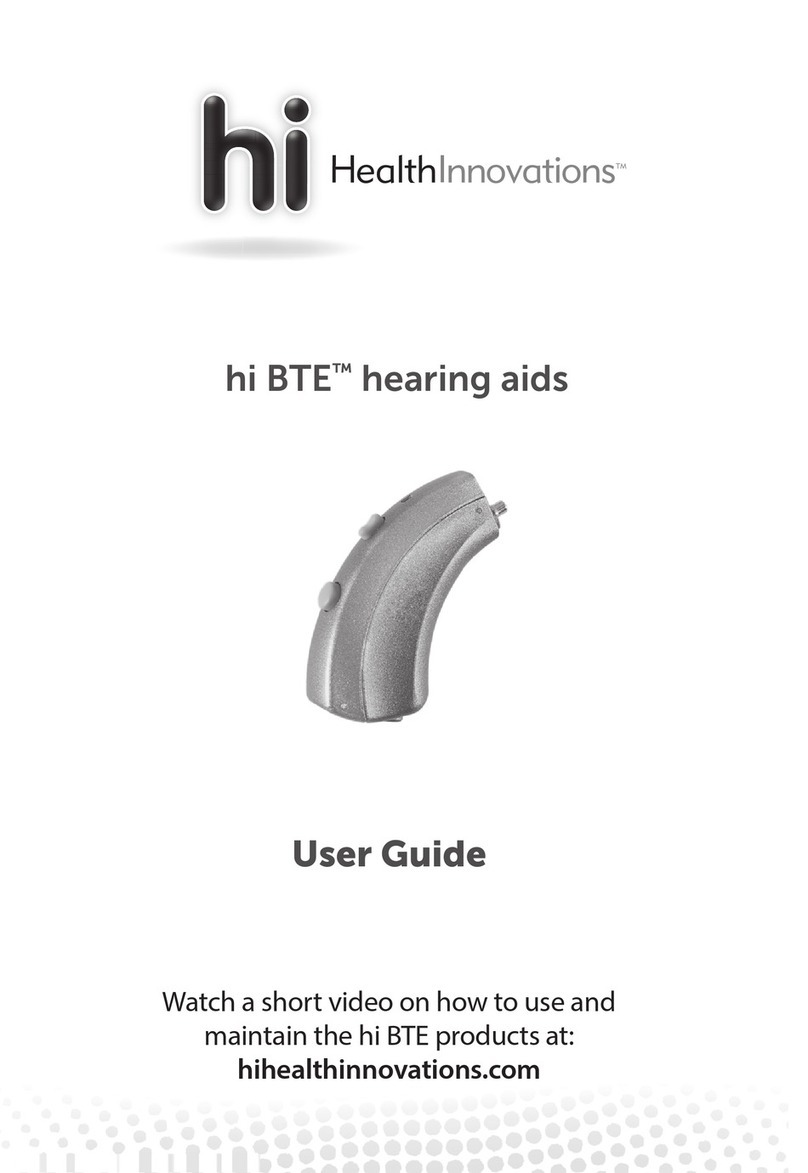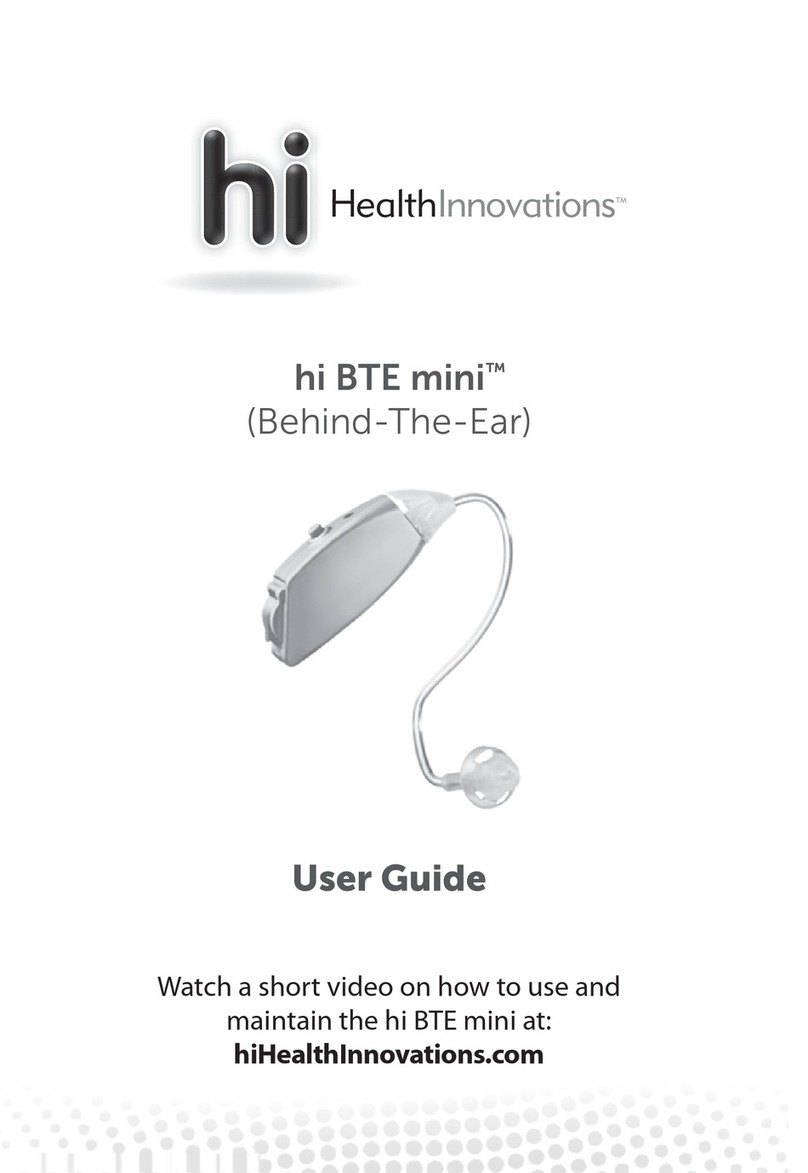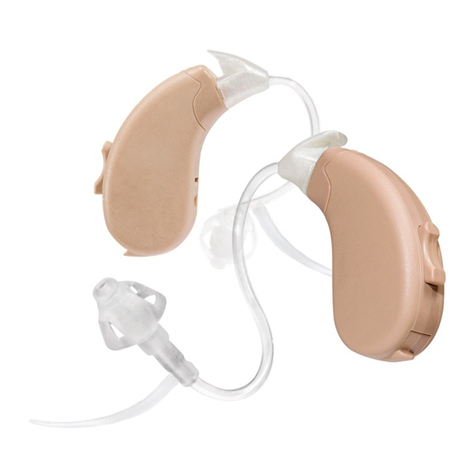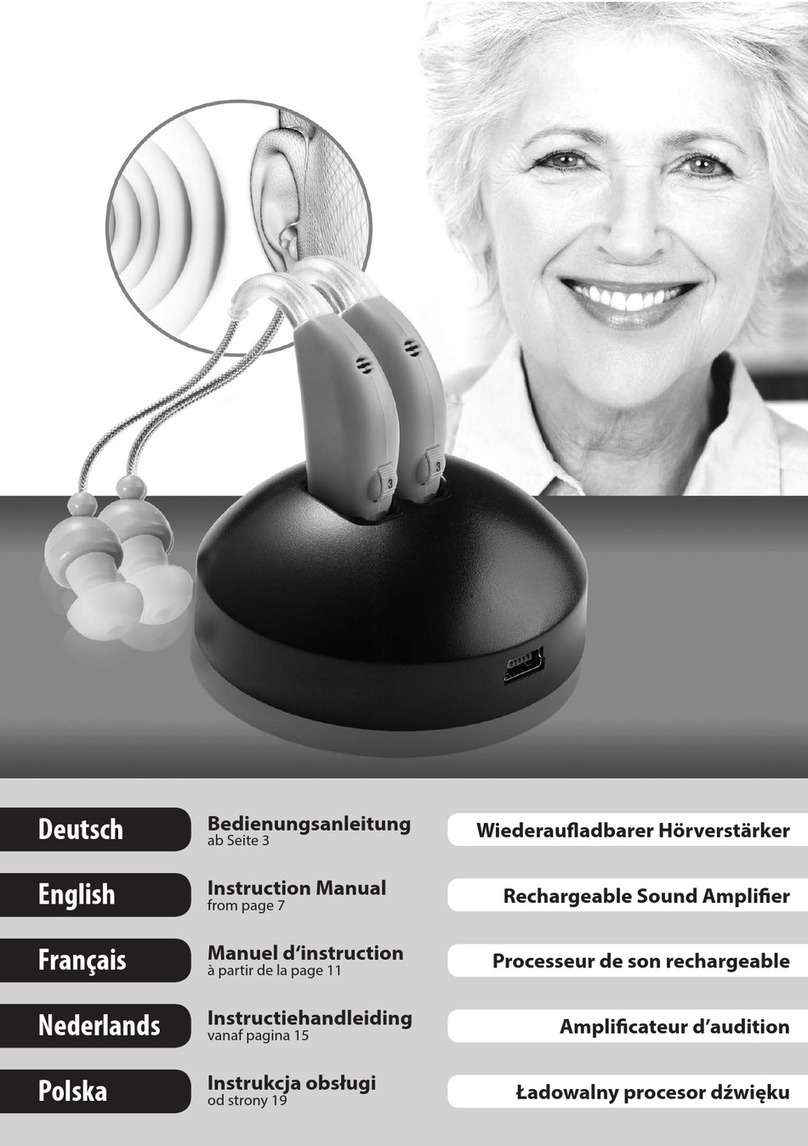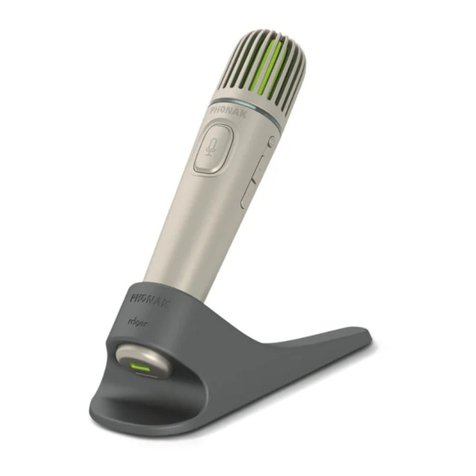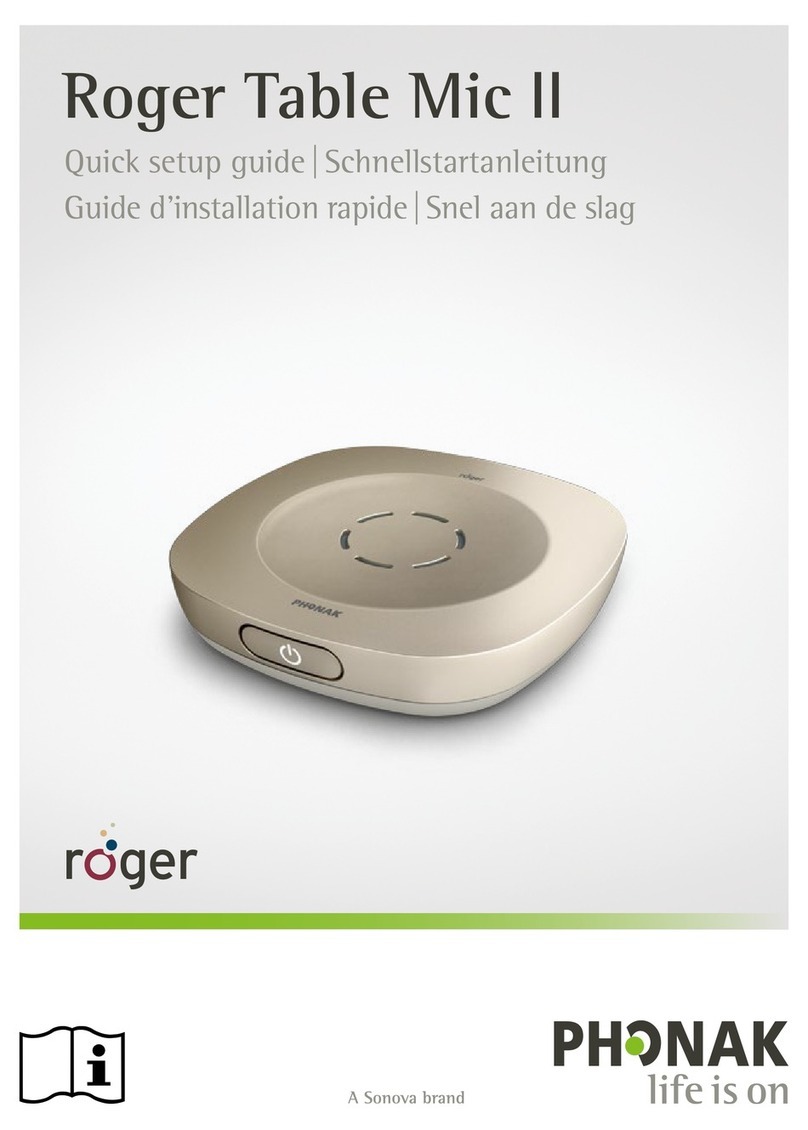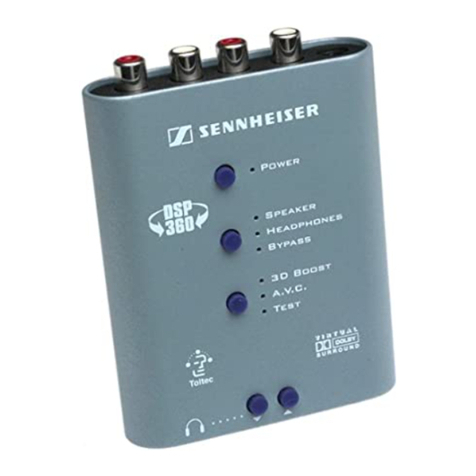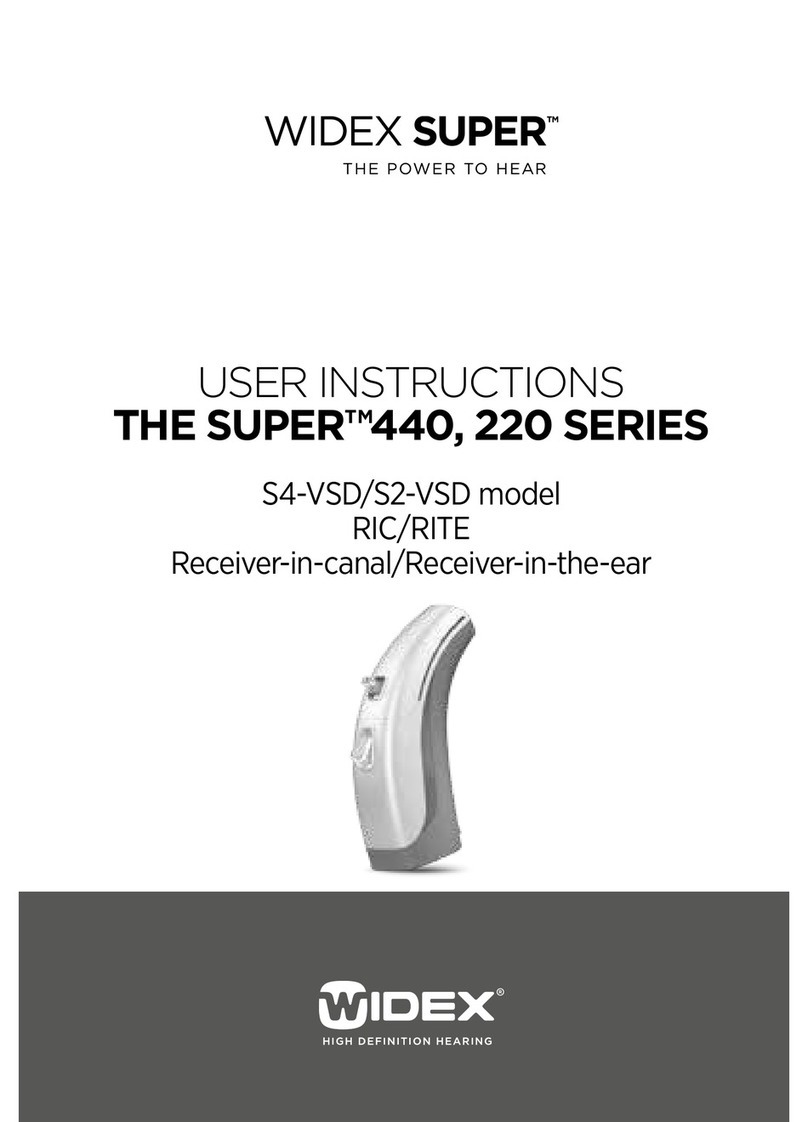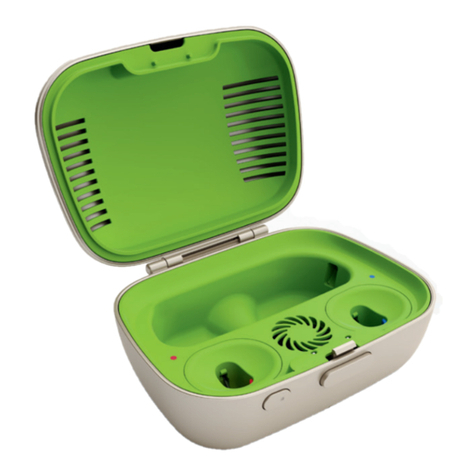hi Health Innavations ITC User manual

hi ITC™
(In-The-Canal)
User Guide
Watch a short video on how to use and
maintain the hi ITC at:
hiHealthInnovations.com

Table of contents
Getting the most from your
new hearing aids ..................................................... 1–2
hi ITC at a glance ................................................................ 3
Turning your hearing aids on and o ......................... 4
Wearing your hearing aids ........................................ 4–5
Changing the wax guard ........................................... 6–7
Battery................................................................................8–9
Changing program settings .................................. 10 –11
Using with telephones and cellular phones ............11
Caring for your hearing aids ...................................12–13
Troubleshooting ............................................................... 14
Technical specications .......................................... 15–16
Warranty, return and service ........................................17
FDA statements ......................................................... 18–19

1
Getting the most from your new hearing aids
Hearing is a vital part of how you connect with the
world, from laughing at a punch line to sharing a
secret with a loved one. Hearing is also vital to your
overall health. Congratulations on taking control of
your hearinghealth!
While no hearing aid can restore normal hearing and
will not prevent or improve a hearing impairment
resulting from organic conditions, these tips will help
you obtain the most benets from your
hearing aids:
• If you are new to hearing aids, it may take a few
weeks before you are completely comfortable with
them and can fully enjoy the benets. Be patient
as you adjust to hearing sounds that you may
not have heard in a long time. Infrequent use of
hearing aids does not provide full benets, so your
ultimate goal is to wear the hearing aids all day,
every day
• You may nd that a quiet environment is more
comfortable at rst. Gradually introduce new
listening environments
• Whenever possible, directly face the sounds you
are trying to hear and move closer, especially
in noisy environments. When speaking with
someone, you can also use facial cues to help
you understand. If you would like information on

2
speech (lip)-reading or additional help, consider
nding a support group. A good place to start is
the Hearing Loss Association of America (HLAA)
at hearingloss.org
• Your own voice may initially sound loud, or as
though you are talking “in a barrel.” This is very
common, and most people get used to it over
time
• If you are new to hearing aids, you may hear
background noise (e.g., hum of a fan) that
you may not have heard in a long time. Most
people are able to tune out these noises as they
continue to wear their hearing aids
• When you are in a restaurant, avoid sitting in the
middle of the room or near the kitchen. A booth
to the side or in a corner will be more favorable
• It is not necessary to remove your hearing aids at
security checkpoints (e.g., airports). However, you
should remove your hearing aids for CT and MRI
scans or for other electromagnetic procedures
At hi HealthInnovations, we care deeply about
our customers. If you have questions that are not
addressed in this guide or the resources on our
website at hiHealthInnovations.com,please call us
toll-free at 1-855-523-9355, and press 2.

3
Your hi ITC at a glance
1. Microphone –
sound enters the
hearing aid through
themicrophone.
2. Speaker and wax
guard lter – the
speaker delivers
amplied sound to
you. The wax guard
lter protects the hearing aid from ear wax
damage. Wax guard lters should be changed
monthly or more frequently as needed.
Left/Right – blue wax guard lter is for the left
ear. Red wax guard lter is for the rightear.
3. Battery door / on and o – close the door to
turn on the hearing aids. Open the door to turn
o thehearing aids.
Left/Right – Inside the battery door is a red dot
indicating the hearing aid is for the right ear.
There is no dot on the hearing aid for the left
ear.
4. Serial number – each hearing aid has a unique
serialnumber.
5. Retention ring – curls along the body of your
ear and holds the hearing aid in place.
Ear canal
Bottom
Top

4
Your hearing aid has a battery door that acts as
an on/o switch and allows access to thebattery.
When the door is closed, the hearing aid is on.
When the door is open, the hearing aid is o.
1. ON: Simply close the battery door with a battery
in it.
2. OFF: When you’re not wearing your hearing aids,
keep the battery door open to extend battery life.
You do not need to remove the battery. If you are
not planning to wear your hearing aids in the next
12 hours, please remove the battery to allow any
moisture to evaporate.
Wearing your hearing aids
Turning hearing aids on and o

5
Hold your hi ITC by the bottom of the retentionring.
Place the hearing aid in the ear canal with the
speaker pointed toward the eardrum. The retention
ring will prevent the hearing aid from being
inserted too deeply into the canal.
Curl the retention ring along the body of your ear.
If the retention ring is too loose, call us toll-free at
1-855-523-9355, and press 2.
Allergic reactions to hearing aids are unlikely.
However, if you experience skin irritation, redness,
or soreness in or around your ears, please contact
your physician.

6
Changing the wax guard
The wax guard contains a tiny screen that prevents
wax from entering the hearing aids. Wax guards
are delicate and must be replaced, not cleaned.
A broken wax guard can allow wax to enter the
hearing aids and damage them.
Given that earwax is natural and common, replace
the wax guard on your hearing aids every month
or more frequently as needed. This is easy to do
with the wax guard dispenser and changing tool
you received with your hearing aids.
Gently screw in the threaded end of the changing
tool into the old wax guard and pull out the old
wax guard.

7
To dispose of the wax guard, push the changing
tool with the old wax guard into the center of the
wheel dispenser, and slip o the wax guard by
sliding the tool to the side.
Use the other end of the changing tool to pull out
a new wax guard from the dispenser and insert it
into your hi ITC.

8
Battery
The batteries are air activated. To activate the
battery, remove the tab from the battery and allow
the battery to be exposed to the air for one full
minute before closing the battery door.
The hearing aids use a size 10 battery. The battery
life varies depending on the amount of hearing aid
use, but is typically about 70 hours, or one week.
Please insert batteries when you receive the
hearing aids.
Low battery indicator
A warning of three double beeps every eight
minutes indicates that the battery needs to be
replaced. If you do not change your battery, you
will hear another warning of six double beeps, at
which time your hearing aid will automatically
turn o.
Inserting/replacing the battery
1. Gently pull open the battery door with your
ngernail and remove the used battery.
2. Using the plastic tab of a fresh battery, place

9
the battery into the battery door. Hold the
battery in place and peel o the plastictab.
3. To fully activate the battery, wait for one full
minute, then gently close the battery door. If
the door does not close easily, check to see if the
battery was inserted properly. Do NOT force the
door closed.
NOTE: When the battery is taken out and put back
in, the hearing aid returns to Program 1. See page
10 for information about changing the program.
Battery warning information
Dispose of used batteries in an environmentally
friendly way. Do not place batteries in your mouth.
If swallowed, contact your physician immediately
or call the National Battery Hotline at
1-202-625-3333.

10
If you have worn hearing aids before, you may
have used dierent programs for dierent
environments. Our hearing aids automatically
adjust to dierent environments. Thus, once you
determine your preferred program, you can leave
it in that setting.
Program control
To change the listening program, tap the outer
part of your ear twice. Doing this will advance the
hearing aid to the next highest program.
The ngers should be held
together, and the nger
tips should lightly tap the
outer part of the ear. The
tap should be a at pat on
the ear. It is the pressure
generated by the pat that
triggers the switch. The pat should be soft and
never painful or severe enough to cause ringing in
your ear.
Changing program settings

11
You don’t need to touch the hearing aid. The
hearing aid will beep to let you know which
program has beenselected.
Program 1 ♪ 1 beep
Program 2 ♪♪ 2 beeps
Program 3 ♪♪♪ 3 beeps
Note: hearing aids dispensed by hi
HealthInnovations professionals may have
less than three programs to meet your specic
hearing needs.
Using with telephones and cellular phones
Traditional corded phones, cordless phones
and cell phones
First, try to use the phone as you normally would
hold it. If you cannot hear well, move the handset
up slightly to nd the position that sounds best
to you. If you encounter whistling, tilt the phone
handset at an angle until the whistling stops. It may
help to turn the volume up on your phone. Practice
using the telephone with someone familiar to you,
and move the phone around a bit to get the best
sound.

12
Caring for your hearing aids
Regardless of how much you paid for hearing aids,
they are sensitive electronic devices susceptible
to moisture and wax. Do your best to keep
your hearing aids clean and dry at all times. For
more information, watch the hi ITC video at
hiHealthInnovations.com.
• When not wearing your hearing aids, open the
battery door to allow any moisture to evaporate.
This also helps extend battery life. Store your
hearing aids in a safe, dry place, away from
direct sunlight and avoid extreme temperatures
• Do not leave your hearing aids in the bathroom
while showering
• When you sweat, be sure to take your hearing
aids o, open the battery door, and allow them
to dry for a minimum of 15 minutes before
putting them back on
• Ear wax is natural and common, but it can cause
your hearing aids to feedback or malfunction.
Keep your wax guards fresh by changing them
every month or more frequently as needed

13
• Do not use water, alcohol or other liquids to
clean the hearing aids as they may damage
them. If the hearing aids become wet, do not
attempt to dry them in an oven or microwave.
Open the battery door, remove the battery and
let the hearing aids dry naturally for 24-48 hours
• If you live in a humid climate or are around
persistent moisture, consider purchasing
an inexpensive hearing aid dehumidier or
dryer. We have hearing aid dryers available for
purchase
• Ask your doctor to remove excess ear wax from
your ears, or ask if you can use an
over-the-counter kit to remove ear wax
• Remove your hearing aids before using hair
spray, spray perfume or shaving lotions, as these
items can clog or damage your hearing aids
• Do not drop your hearing aids or knock them
against hard surfaces

14
Troubleshooting
Cause Possible remedy
1. No sound or not loud enough
Not turned on Turn on by closing the
battery door
Low/dead battery Replace battery
Ear wax Replace wax guard
Programming
adjustment
Call Customer Service
toll-free at 1-855-523-9355
Moisture Open battery door and
allow to dry
2. Three double beeps
Low battery Replace battery
3. Whistling or feedback
Device not
inserted properly
Remove and reinsert
Hair or clothing
near ear
Remove hair or clothing
near ear
Ear wax Replace wax guard
4. Poor t
Device falling out
of your ears
Call Customer Service
toll-free at 1-855-523-9355

15
Technical specifications
• Peak OSPL 90 110 dB SPL
• HFA OSPL 90 105 dB SPL
• Average full-on gain 30 dB
• Peak gain 40 dB
• Reference test gain 31 dB
• Frequency range 200–6500 Hz
• Total harmonic distortion <2%
• Equivalent input noise <30 dB SPL
• Battery current drain 0.90 mA
• Attack 6 mS and release 60 mS

16
Input/Output
OSL90
FRC response
Input-output curve
300
Saturation output curve and
frequency response curve

17
Warranty
Each hearing aid comes with a one-year manufacturer’s
warranty from the date of shipment to you. If at our
examination it is determined that the unit failed to work due
to parts, materials or workmanship, the hearing aid will be
repaired or replaced for free. This warranty does not cover
malfunctions due to unusual wear and tear, unauthorized
alteration or mistreatment of the device, such as physical
shock, damage from moisture or sweat, excessive wax build-
up, or tampering with the instrument, all of which void the
warranty. This warranty does not cover batteries, ear tubes
& tips, ear molds or accessories. hiHealthInnovations is the
only authorized service center for your warranty service.
Please contact Customer Service at 1-855-523-9355 to obtain
authorization to return the product, and a shipping label.
Cancellation and return information
To cancel your purchase, you must give or mail written
notice of cancellation to us. For complete details about
the refund policy, please see your Bill of Sale, visit
hiHealthInnovations.com or contact Customer Service
toll-free at 1-855-523-9355, and press 2.
Service
Our mailing address is P.O. Box 356, Minneapolis, MN55440.
Please do not mail to this address without contacting
Customer Service rst at 1-855-523-9355, and press 2.
Warranty, return and service

18
FDA statements
Warning to hearing aid dispensers. A hearing aid dispenser
should advise a prospective hearing aid user to consult
promptly with a licensed physician (preferably an ear
specialist) before dispensing a hearing aid if the hearing aid
dispenser determines through inquiry, actual observation,
or review of any other available information concerning
the prospective user, that the prospective user has any of
the following conditions: (i) Visible congenital or traumatic
deformity of the ear; (ii) History of active drainage from the ear
within the previous 90 days; (iii) History of sudden or rapidly
progressive hearing loss within the previous 90 days; (iv) Acute
or chronic dizziness; (v) Unilateral hearing loss of sudden or
recent onset within the previous 90 days; (vi)Audiometric
air-bone gap equal to or greater than 15 decibels at
500hertz(Hz), 1,000 Hz, and 2,000 Hz; (vii) Visible evidence of
signicant cerumen accumulation or a foreign body in the ear
canal; (viii) Pain or discomfort in theear.
Important notice for prospective aid users
Good health practice requires that a person with hearing loss
have a medical evaluation by a licensed physician (preferably
a physician who specializes in diseases of the ear) before
purchasing a hearing aid. Licensed physicians who specialize
in diseases of the ear are often referred to as otolaryngologists,
otologists or otorhinolaryngologists. The purpose of medical
evaluation is to assure that all medically treatable conditions
that may aect hearing are identied and treated before the
hearing aid is purchased.
Following the medical evaluation, the physician will give you
a written statement that states that your hearing loss has
been medically evaluated and that you may be considered a
Table of contents
Other hi Health Innavations Hearing Aid manuals
Popular Hearing Aid manuals by other brands

TV Ears
TV Ears Phone Cord instructions
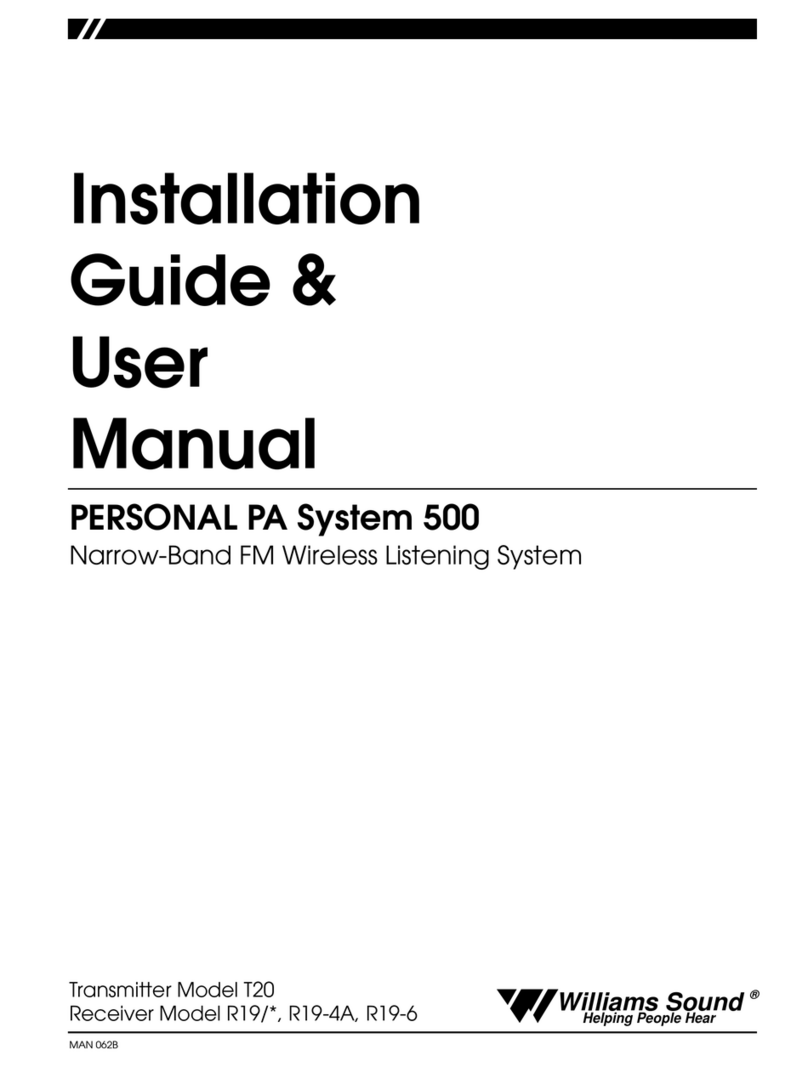
Williams Sound
Williams Sound PERSONAL PA System 500 Installation guide & user manual
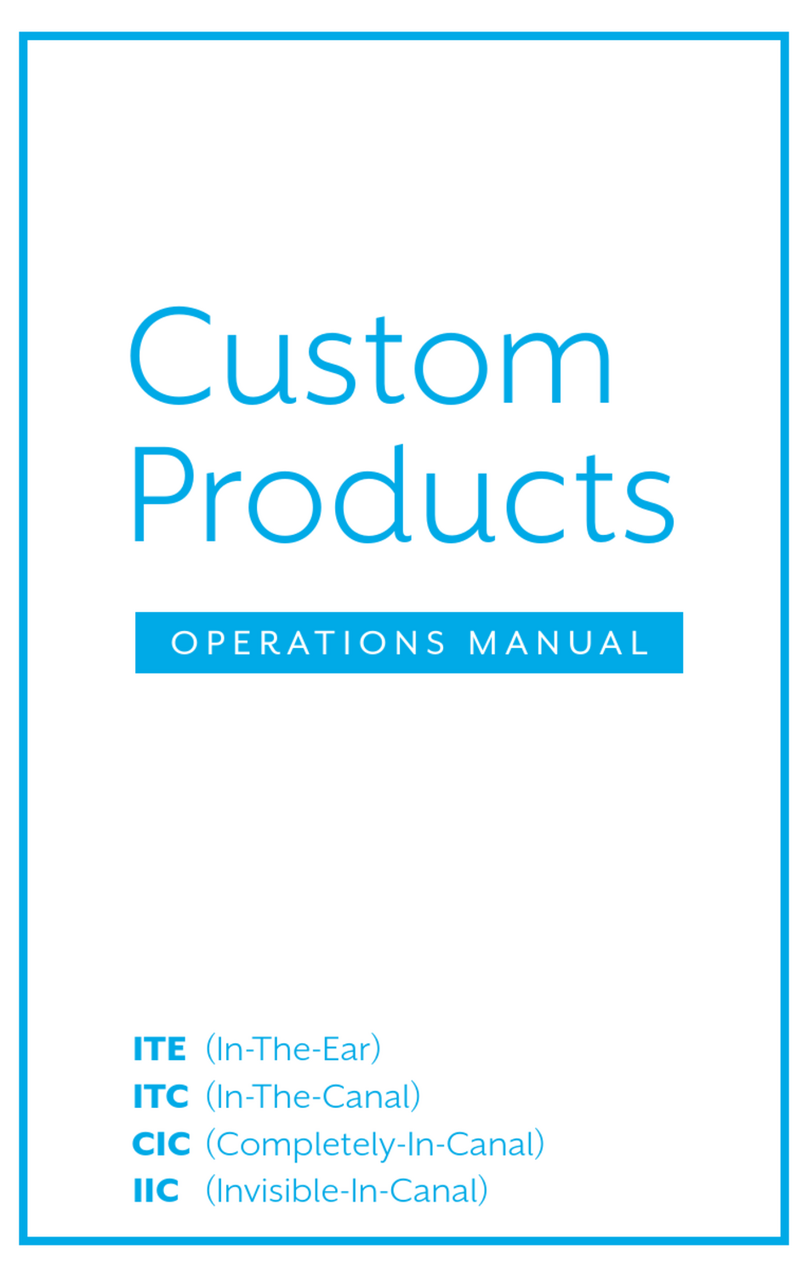
Starkey Hearing Technologies
Starkey Hearing Technologies ITE Operation manual
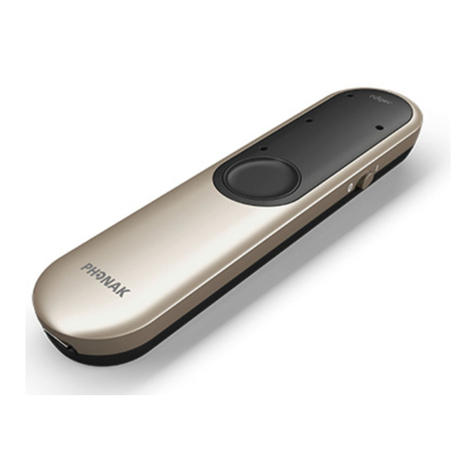
Phonak
Phonak Roger On user guide
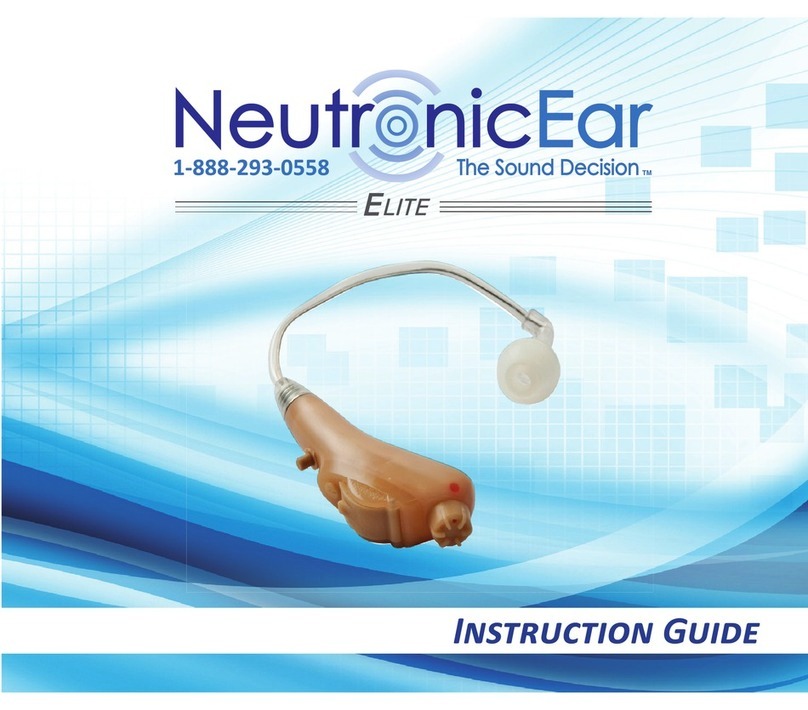
NeutronicEar
NeutronicEar Elite Instruction guide
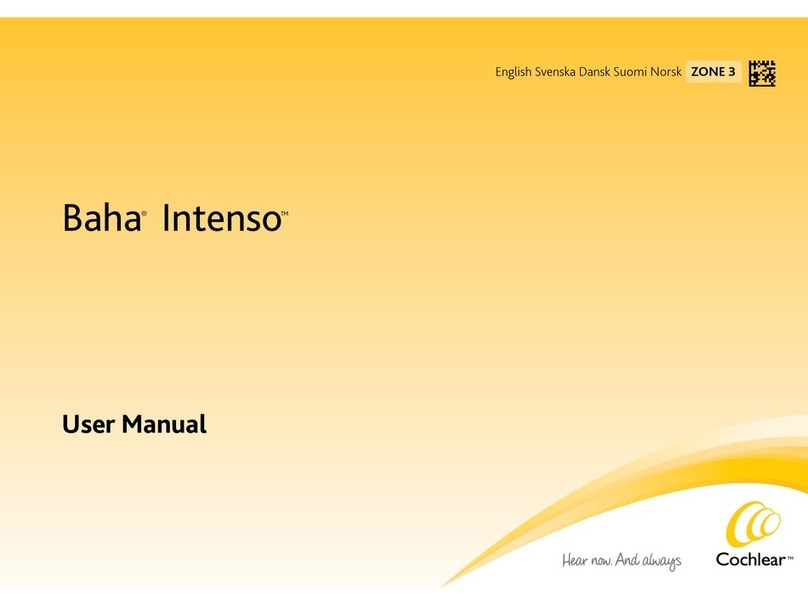
Cochlear
Cochlear Baha Intenso user manual

